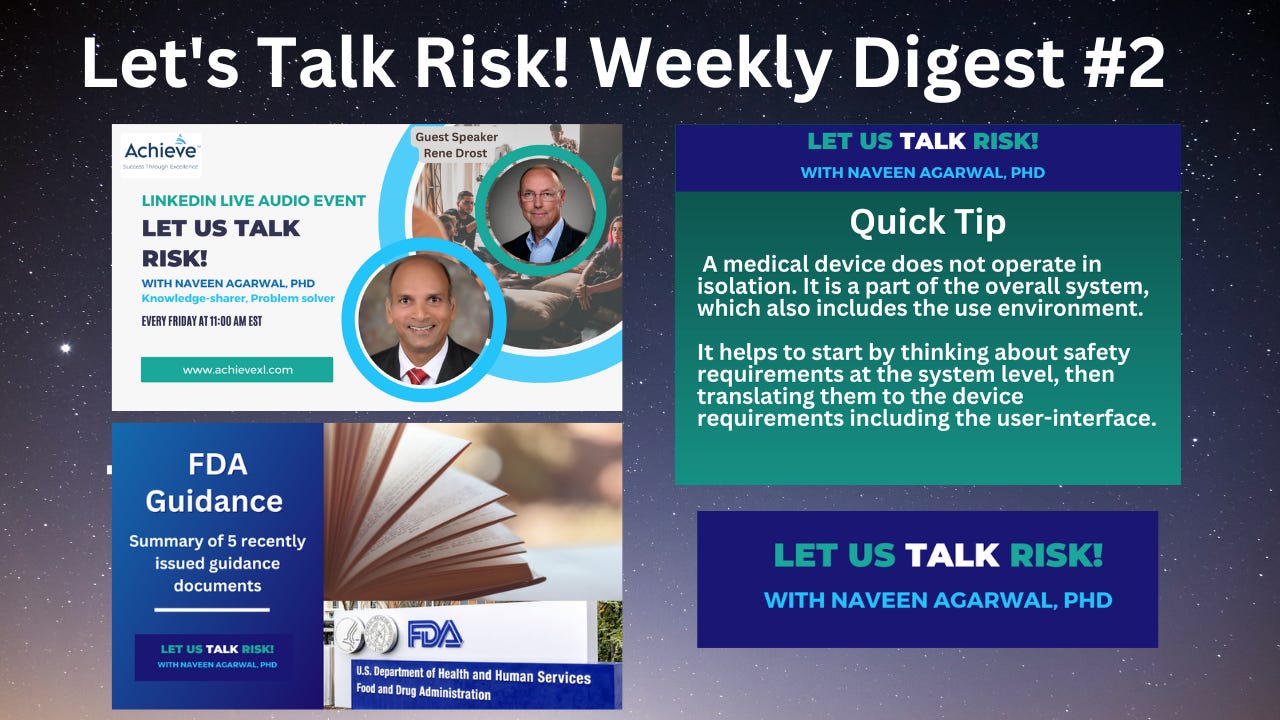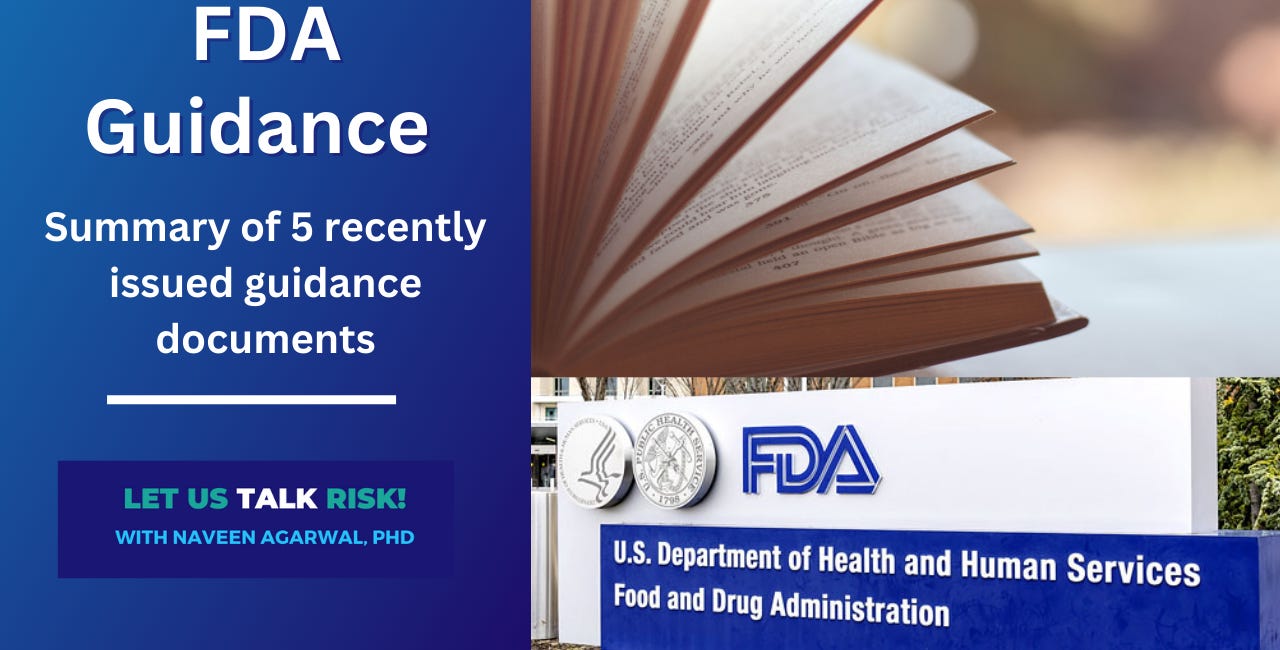LTR Weekly Digest #2 - 2nd September, 2023
Catch up on this week's articles: review of 5 FDA guidance documents, applying a system safety approach, and leveraging team diversity to boost competence in risk management.
Dear colleagues, hello! 👋
I received positive feedback from many of you about reducing newsletter delivery frequency to only once per week. As a result, I will be sending you a weekly digest with links to Let’s Talk Risk! (LTR) articles on Saturday of each week.
Remember, you can download the Substack app on your mobile phone to get alerts as soon as a new article is published. You can also catch up anytime on past articles in the LTR archive.
Finally, you can add your voice to discussions on LTR chat. Paid subscribers can also initiate a discussion thread anytime.
Ask a risk management question
Now you can ask a risk management question for quick answer and practical tips!
Weekly knowledge challenge
I hope you enjoyed the knowledge challenge question last week. Here is the correct answer:
ISO 14971, the international standard for application of risk management is currently in its third revision, issued in 2019.
Check out this week’s knowledge challenge question by scrolling down to the end.
If you enjoy reading Let’s Talk Risk!, consider upgrading for full access to premium content.
Thank you for your support and I hope you enjoy reading these latest articles!
Here are the articles published this week
Premium content (with free preview)
A quick summary of 5 recent FDA guidance documents - Aug 2023
The US FDA frequently issues guidance documents for the industry and its own staff to clarify expectations and approach to regulatory decision making. In theory, these guidance documents are not legally binding. However, it is smart to follow all applicable guidance documents if you want to do business with the FDA, and achieve a favorable outcome for your medical device!
Free content
Quick Tip: Start with system safety requirements for your medical device
A common practice in the medical device industry is to apply a bottom-up approach to risk analysis using a failure modes and effects analysis (FMEA) technique. Although, an FMEA is a useful technique for identifying and controlling potential failure modes, it is not effective at understanding system level hazards that may actually lead to harm.
Team diversity helps boost competence in risk management
Note: this article highlights key insights gained from a conversation with Rene Drost as part of the Let’s Talk Risk! with Dr. Naveen Agarwal series on LinkedIn. Listen to the full recording of the discussion below. If you enjoyed this conversation, consider subscribing to








